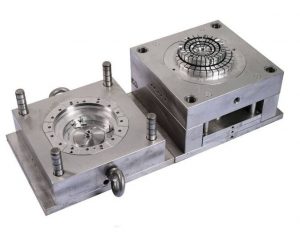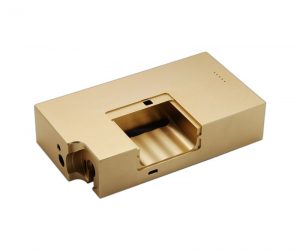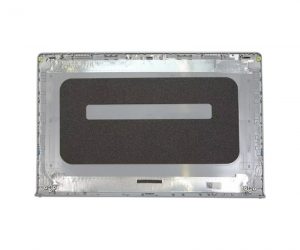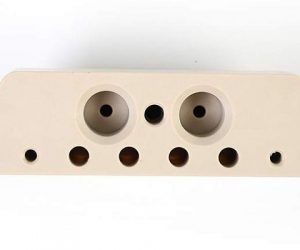In the large-scale production of plastic parts, a commonly used method is called injection molding. This process involves injecting melted plastic into a mold, then cooling and solidifying it into the desired shape.
In the injection molding process, the first step is to prepare a mold, which consists of two parts: a movable mold and a fixed mold. These two parts are pressed together by the injection molding machine to form a closed mold cavity.
Next, inject the melted plastic material into the mold cavity. This usually involves heating the plastic pellets to their melting point and then injecting them into an injection molding machine for heating and mixing. After the plastic material is fully melted, the injection molding machine will inject it into the mold cavity.
After injecting plastic material into the mold cavity, it will quickly cool down and begin to solidify. This process usually only takes a few seconds. As the plastic material cools and solidifies, it gradually forms the desired shape.
Once the plastic part is completely cured, the injection molding machine will separate the movable mold from the fixed mold, thereby opening the mold. At this point, the already formed plastic parts can be removed. These parts can be further processed as needed, such as trimming, assembling, or coloring.
Injection molding technology has many advantages. Firstly, it can produce plastic parts with complex shapes and high precision. Secondly, due to the injection molding process being able to process multiple parts simultaneously, the production efficiency is very high. In addition, injection molding can use a variety of different plastic materials to meet the needs of different applications.
However, injection molding also faces some challenges and limitations. For example, for large or complex parts, multiple molds may need to be used to gradually shape them. In addition, controlling temperature and pressure during injection molding is also crucial to ensure the quality and performance of the parts.
Overall, plastic molds can efficiently manufacture plastic parts of various shapes and sizes through injection molding technology. This manufacturing process is widely used in fields such as automobiles, electronics, healthcare, and consumer goods, bringing many conveniences and innovations to our lives.
Let's break down how we make a bunch of plastic parts in different shapes and sizes using the plastic mold process:
- Designing the Mold: First, we figure out what each part will look like and how big it needs to be. The mold has two parts – one forms the outside (cavity) and the other forms the inside (core). When these two pieces come together, they create the shape of the part.
- Making the Mold: Once we've got the design sorted, we use super precise machines to make the mold. Usually, the mold is made of tough materials like steel or aluminum that can handle heat well.
- Setting Up Injection Molding: We put the mold onto an injection molding machine and set it up with the right settings for things like temperature, pressure, and how fast the plastic goes in.
- Injecting the Plastic: We put plastic pellets or granules into the machine. These get melted and then pushed into the mold under high pressure.
- Cooling Down: The melted plastic cools and hardens inside the mold, taking on its shape.
- Popping Out the Part: When the plastic is solid, the mold opens, and little pins push the finished part out.
- Switching Molds for Different Parts: To make different parts, we can use the same mold again but swap out the inserts or cores. Each set of inserts is for a specific part design, making it easy to switch between parts.
- Checking Quality: After each batch, we check the parts to make sure they're good quality and the right size. If there are any problems, we tweak the process to fix them.
- Finishing Touches: Some parts might need extra work after they're made, like trimming off excess material, adding surface finishes, or putting together multiple pieces.
- Keeping the Line Going: This whole process can keep going over and over, allowing us to make lots of plastic parts quickly and consistently.
By using the same machine and just changing the mold inserts, we can efficiently make a variety of plastic parts. This flexibility and ability to scale up make injection molding a go-to method for making lots of different plastic products in many industries.
Plastic mold is a combination mold used for compression molding, extrusion molding, injection molding, blow molding, and low foaming molding. By coordinating the changes of convex molds, concave molds, and auxiliary molding systems, a series of plastic parts of different shapes and sizes can be processed.
Plastic molds consist of mobile molds and fixed molds. The mobile mold is installed on the mobile template of the injection molding machine, while the fixed mold is installed on the fixed template of the injection molding machine. During the injection molding process, the moving mold and the fixed mold are closed to form a gating system and cavity. When opening the mold, separate the moving mold from the fixed mold to facilitate the removal of plastic products.
Although the structure of plastic molds may vary greatly due to factors such as the type and properties of plastics, the shape and structure of plastic products, and the type of injection molding machine, their basic structure is the same.
Plastic molds are mainly composed of gating system, temperature regulation system, molded parts system, exhaust system, guiding system, ejection system, and other parts. Among them, the gating system and molded parts are components that directly come into contact with plastic and change with the plastic and product. They are the most complex and variable parts in plastic molds, requiring the highest processing accuracy and smoothness.
According to the structure, plastic molds are usually composed of mold seats, mold cores, auxiliary components, auxiliary systems, auxiliary settings, blind spot handling mechanisms, etc.
The general plastic mold injection molding machine mainly includes an injection device, a mold closing device, a hydraulic transmission system, and an electrical control system. The main function of the injection device is to uniformly plasticize the plastic and inject a certain amount of molten material into the mold cavity with sufficient pressure and speed. The injection device mainly consists of plasticizing components (consisting of screws, barrels, and nozzles), hoppers, transmission devices, measuring devices, injection and moving oil cylinders, etc.
Plastic mold technology is a popular manufacturing technique used to produce plastic parts of different shapes and sizes. This is a cost-effective method for mass production of plastic parts. This process involves the use of molds, which are tools used to shape plastic materials into the desired shape.
Plastic mold technology is a multifunctional technique that can be used to produce plastic parts of various shapes and sizes. This process can be used to produce simple parts such as lids, hats, and containers, as well as complex parts such as automotive components, medical equipment, and consumer electronics.
The plastic mold process includes several steps. The first step is to design the mold. The mold is designed according to the specifications of the parts to be produced. Molds are usually made of steel or aluminum and can be designed to produce one or more parts at a time.
The second step is to prepare plastic materials. Plastic materials are usually in the form of particles or powders. Then melt the material and inject it into the mold. Plastic material is injected under high pressure to ensure complete and uniform filling of the mold.
The third step is to cool the plastic material. The mold is cooled to solidify the plastic material and form the shape of the mold. Air or water can be used for cooling. The cooling time depends on the thickness of the parts and the type of plastic material used.
The fourth step is to push the parts out of the mold. Once the plastic material cools and solidifies, the parts will be ejected from the mold. The mold can be designed to automatically or manually eject parts.
Plastic mold technology can be used to produce parts of different shapes and sizes. This process can be used to produce parts with complex shapes, such as gears, springs, and hinges. This process can also be used to produce parts with different wall thicknesses, such as medical equipment and automotive components.
The plastic mold process can produce parts with different surface smoothness. Molds can be designed to produce parts with smooth, glossy surfaces or textured surfaces. The surface smoothness of the parts depends on the type of mold used and the type of plastic material used.
Plastic mold technology is a cost-effective method for mass production of plastic parts. This process can be used to produce parts with high productivity, thereby reducing the cost of each part. This process can also be used to produce parts of consistent quality, thereby reducing the need for quality control.
Plastic mold technology is a sustainable way of producing plastic parts. This process can be used to recycle plastic materials and reduce waste. This process can also be used to produce parts made of biodegradable plastic materials, thereby reducing the environmental impact of plastic production.
In short, plastic mold technology is a multifunctional manufacturing technique that can be used to produce plastic parts of different shapes and sizes. The process includes several steps, including designing the mold, preparing the plastic material, injecting the plastic material into the mold, cooling the plastic material, and ejecting the part from the mold. This process can be used to produce parts with different surface smoothness, wall thickness, and materials. Plastic mold technology is a cost-effective and sustainable way of producing plastic parts, making it a popular choice for manufacturers worldwide.




